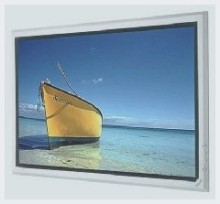
Need guidance, buying a TV? If you are considering options like LCD TVs and plasma, you must read on. Here is a comparative analysis of plasma vs. LCD.
In order to compare plasma TV with LCD, you need to understand the differences in their technologies. It is important to analyze your usage requirements before you make the buy. Following is a television-buying guide, which will help you come to a decision about whether to go for a plasma TV or get home an LCD. Here is an overview of both the technologies followed by their comparative study.
Plasma TV: It is a flat panel display, which is commonly used for large television screens. Plasma displays are bright and have a low-luminance level in relation to an LCD screen. Its power consumption depends largely on the picture content whereby brighter pictures draw more power than the darker ones.
How does a plasma TV work? A plasma television display consists of two plates of glass that hold thousands of small cells containing xenon and neon gases. Long electrodes are placed between the glass plates on both sides of the cells. The control circuits of a plasma television charge the electrodes to generate a potential difference. The voltage difference results in the ionization of gases, forming plasma. The collision of the gas ions while they move towards the electrodes, results in the emission of photons. Each pixel of a plasma display is made of three subpixel cells of red, blue and green colored phosphors. The intensity of each of the subpixel colors can be increased or decreased by varying the current flowing through them, thus creating different combinations of red, green and blue. This is why, plasma TV can produce most of the visible colors and give an enriched user experience.
LCD TV: An LCD display consists of an array of liquid crystals that are placed between two glass plates with a source of light at the back. The electric charge applied to the crystals, results in the production of images.
An LCD display consists of a flat panel that is made up of pixels filled with liquid crystals. Each pixel of an LCD display consists of a layer of molecules placed between two transparent electrodes and two polarizing filters. Before the application of electric field, the liquid crystal molecules are aligned in a particular direction. A variation in the voltage applied to the liquid crystal layer in each pixel, results in the production of different levels of gray. In color LCD displays, each pixel is divided into three subpixels of colors red, green and blue and the color elements are generated by subtracting colors from white light. As against the different-colored phosphors used in a plasma display, the cells in an LCD TV are colored by means of pigment filters, metal oxide filters and dye filters.
Plasma TV vs. LCD TV

Plasma TV provides a larger screen availability as compared to LCDs. Plasma displays can render a better contrast ratio and enhanced color accuracy. Plasma television can render deeper blacks. Plasma TVs support a wide range of colors and can produce large-sized pictures. LCDs produce brighter pictures. However, greens can sometimes appear over-green and reds might appear warmer. While plasma TV outweighs LCD in brightness and contrast, LCDs are better off in terms of picture resolution.
In plasma TVs, light is not spread across the screen from a central source. Rather, each pixel of a plasma display produces its own light and hence, is readily visible with its brightness consistent with the other pixels on the screen. Plasma screens offer wider viewing angles.
At times, the pixels of LCD displays lack the ability to give quick responses to the changes in color in case of moving images. In such cases, pictures appear to smudge. Plasma displays better motion tracking capabilities resulting in little or no motion lag in moving images. Plasma TV has a good refresh capacity due to which it can handle rapid movements of pictures.
One of the major disadvantages of plasma TV is that it suffers from screen burn-in. With the phosphor-based electronic displays, a prolonged display can result in the formation of ghost-like images. It is caused by the loss of luminosity of the phosphor compounds. Screen burn-ins result in a decline in the picture quality. LCD TVs are not susceptible to burn-ins. However, there are chances that individual pixels of an LCD television burn out, resulting in the appearance of small black or white dots on the screen.
Moreover, LCD TVs consume less power in comparison to plasma TVs. The estimated power saving is of about 25%.
The price difference between plasma TV and LCDs cannot be ignored. LCDs are affordable in small screen sizes while plasma screens are affordable in larger screen sizes, above 42″.
Now that you have understood the pros and cons of both plasma and LCD technologies, you should be able to decide which one suits your needs. While plasma TV ranks higher in terms of picture quality and overall user experience, LCDs are better options for cost-cutting and power-saving. Whichever option you decide to go for, remember to approach renowned television companies and purchase only from authorized dealers. Market research will help you analyze the cost-effectiveness of each of the technologies, weigh them against your requirements and affordability and find the best TV in the market. You need to find a trade off.